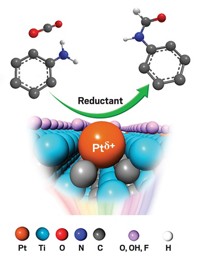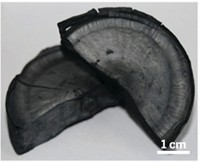Advertisement
Grab your lab coat. Let's get started
Welcome!
Welcome!
Create an account below to get 6 C&EN articles per month, receive newsletters and more - all free.
It seems this is your first time logging in online. Please enter the following information to continue.
As an ACS member you automatically get access to this site. All we need is few more details to create your reading experience.
Not you? Sign in with a different account.
Not you? Sign in with a different account.
ERROR 1
ERROR 1
ERROR 2
ERROR 2
ERROR 2
ERROR 2
ERROR 2
Password and Confirm password must match.
If you have an ACS member number, please enter it here so we can link this account to your membership. (optional)
ERROR 2
ACS values your privacy. By submitting your information, you are gaining access to C&EN and subscribing to our weekly newsletter. We use the information you provide to make your reading experience better, and we will never sell your data to third party members.
Materials
Graphite Oxide's Flammability Explained
A common contaminant in graphite oxide renders the material highly flammable
by Mitch Jacoby
July 26, 2010
| A version of this story appeared in
Volume 88, Issue 30
A common contaminant in graphite oxide renders the material highly flammable, according to a study published in Advanced Functional Materials (DOI: 10.1002/adfm.201000736). The report’s findings identify key safety issues pertaining to a commonly studied material and might clear up confusion regarding the flammability or flame resistance of some carbon-based materials. Academic and industrial researchers often use a well-established method for oxidizing and exfoliating graphite with concentrated acids and potent oxidizers such as KMnO4. The method yields graphite oxide, which can be readily reduced to graphene. While probing graphite oxide’s exothermicity, Northwestern University materials scientists Franklin Kim, Jiayan Luo, Jiaxing Huang, and coworkers found that in the solid state, the material can undergo self-sustaining deoxygenation that propagates throughout the entire sample. In contrast, the graphenelike products made from graphite oxide—reduced graphite oxide and chemically modified graphene—are highly flame resistant, the team finds. However, the products and especially the graphite oxide starting material become violently flammable when contaminated with potassium salt residues from graphite oxide synthesis, they report.




Join the conversation
Contact the reporter
Submit a Letter to the Editor for publication
Engage with us on Twitter